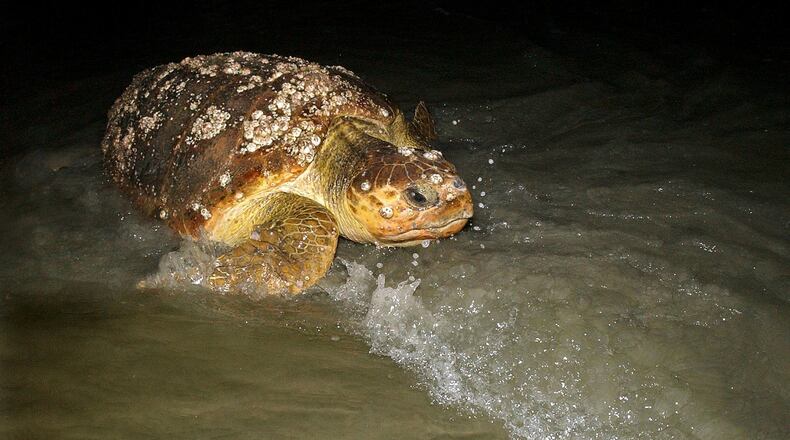A 400-pound loggerhead sea turtle was run over and killed last week along a busy Florida highway, according to reports.
The animal was found dead on State Road A1A in Indialantic, north of Vero Beach, before dawn Wednesday after being hit by several vehicles, officials said.
After receiving an emergency call about 5:16 a.m., Brevard County sheriff’s deputies arrived on the scene and called marine researchers after realizing the “traffic obstruction on the roadway” was actually an endangered species.
Members of the Turtle Marine Research Group at the University of Central Florida recognized the female turtle as one tagged as she nested along the shore of Indialantic back in 2014.
“Our crew members were devastated going out to respond to it,” said Erin Seney, a research professor with the group, according to Fox13 News. “It’s an unusual occurrence.”
Seney said the turtle was known to have some injuries prior to the accident.
“In 2014, she had an injured front flipper. She was missing part of a front flipper. When we saw her yesterday, she also had injuries to two of her rear flippers. And a turtle needs her flippers, particularly her rear flippers to dig a nest,” Seney said, according to Fox13.
Scientists were able to retrace the animal’s steps in the sand along the beach, which revealed how she ultimately ended up on the roadway.
The turtle swam ashore and tried but failed to dig two nests before wallowing up a sand dune where she attempted digging two more nests that also proved futile. From there, the animal made its way through a wall of seagrass and onto a family’s lawn, then onto a neighbor’s property before unfortunately finding itself on A1A.
“In her meandering, trying to nest — unfortunately, not able to dig a full nest — she kept wandering,” Seney said. “At this time, it seems several factors contributed. [We’re] not sure if light was a factor or not.”
Wildlife officials were able to salvage dozens of unhatched eggs from the animal’s body.
“Since she didn’t successfully nest, did still have eggs that were ready to incubate in her body, they were collected very carefully,” Seney said.
In all, the team collected 70 of the loggerhead’s eggs and buried them in the sand near the spot where the turtle had earlier tried to nest.
“Because the eggs were fertilized and just about to be laid, there’s actually a pretty good chance that some of them if not all of them will hatch,” Seney said.
Sea turtle nesting season lasts eight months from March 1 through Oct. 31. Most loggerheads come to lay their eggs on Florida beaches, where it’s illegal to interfere with their nesting efforts. The sea turtle is also one of Georgia’s coastal species.
About the Author
The Latest
Featured



